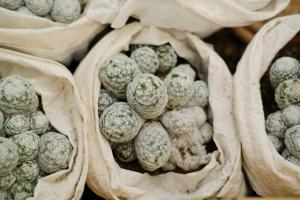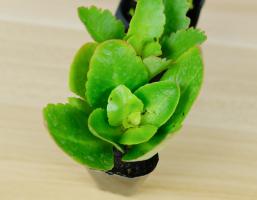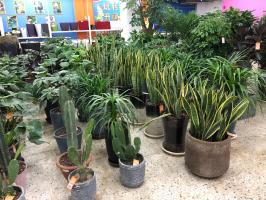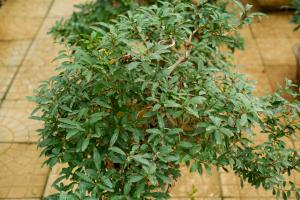What is Water Hyacinth?
Water hyacinth (Eichhornia crassipes) is a floating aquatic plant that originates from South America. It has since become a worldwide invasive species due to its ability to grow rapidly and form dense mats on the surface of water bodies.
Appearance and Characteristics of Water Hyacinth
Water hyacinth has large, rounded leaves with bulbous stalks that provide buoyancy to the plant. Its leaves can grow up to 30cm in diameter and can float on the surface of the water. The plant also has distinctive flowers that grow on stalks above the leaves. These flowers are lavender or pale blue in color and have six petals.
Water hyacinth reproduces asexually through stolons or runners that grow from the mother plant's base. The plant also produces seeds, but these seeds are less common in the wild due to the plant's ability to propagate through stolons. The plant can grow up to 1m in height and can double its biomass in as little as two weeks.
Impact of Water Hyacinth on the Environment
Water hyacinth has a severe impact on the environment, primarily due to its invasive nature. It can take over entire water bodies, blocking sunlight from penetrating the water and causing aquatic plants to die off. This lack of oxygen can also cause fish and other wildlife to die.
Water hyacinth also inhibits water flow, which can cause flooding in some areas. These dense mats of plants can also clog water intake pipes for drinking water, irrigation, and electricity generation systems. Water hyacinth has also become a significant problem for transportation on waterways, as it can impede the movement of boats and ships.
Control of Water Hyacinth
Controlling water hyacinth is a significant challenge due to its rapid growth and ability to propagate. Mechanical removal methods, such as using nets or dredging, can be expensive and time-consuming. Biological control methods have also been used, such as the introduction of herbivorous insects or fish that feed on the plant. These methods, however, can also have unintended consequences on the ecosystem.
Chemical control methods, such as the use of herbicides, can be effective in controlling water hyacinth growth. However, these methods can also have negative impacts on the environment if not used correctly. Careful monitoring and regulation are necessary to ensure that these methods are used safely and effectively.
Conclusion
Water hyacinth is a floating aquatic plant that has become a global invasive species due to its rapid growth and ability to form dense mats on the surface of water bodies. Its impact on ecological systems is significant, and controlling its spread is a considerable challenge. Various methods have been used to control water hyacinth growth, but none have been entirely successful thus far. The safe and effective management of water hyacinth remains a critical issue for water management systems worldwide.

 how many times do yo...
how many times do yo... how many planted tre...
how many planted tre... how many pine trees ...
how many pine trees ... how many pecan trees...
how many pecan trees... how many plants comp...
how many plants comp... how many plants can ...
how many plants can ... how many plants and ...
how many plants and ... how many pepper plan...
how many pepper plan...































